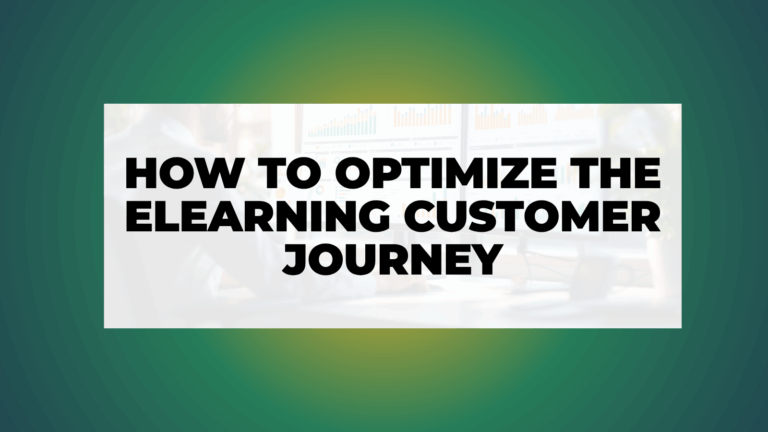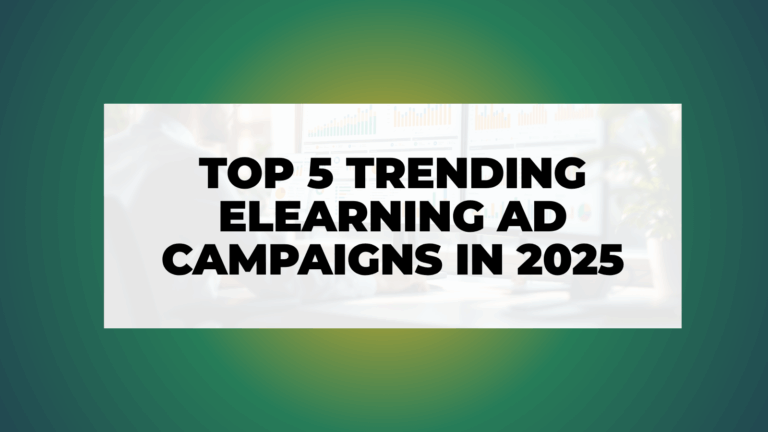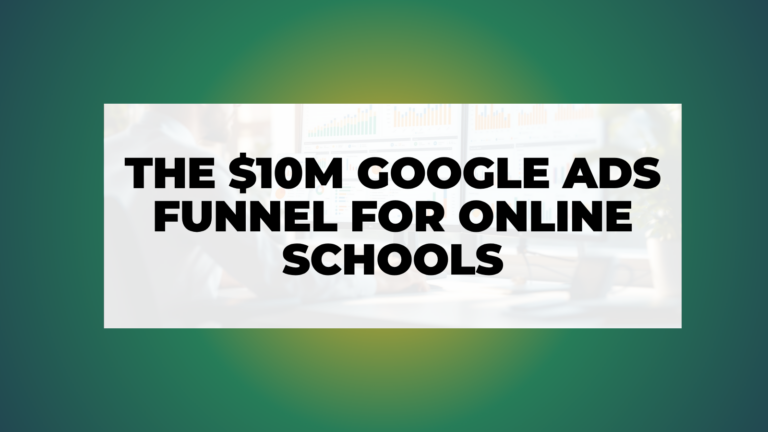AI is reshaping paid media campaigns by automating processes, improving accuracy, and saving time. Here’s how it’s changing the game:
- 30% better ad performance and 25% cost savings through AI-driven targeting.
- Tools like Google Performance Max and Meta Advantage+ optimize bids, budgets, and audience targeting in real-time.
- AI reduces campaign setup time by 60-70% and tests thousands of ad variations for better results.
- Predictive analytics forecast trends with up to 95% accuracy, while live optimization adjusts campaigns instantly.
Key Highlights:
- Smart Bidding: Automates bid adjustments for higher ROI.
- Creative Optimization: Tests and refines ad content.
- Audience Targeting: Uses behavioral data for precise segmentation.
- Budget Allocation: Dynamically adjusts spend based on performance.
- Multi-Channel Management: Ensures consistency across platforms.
- Performance Prediction: Forecasts outcomes to guide decisions.
- Real-Time Optimization: Adapts campaigns instantly to changing trends.
AI complements human creativity by handling data-heavy tasks while marketers focus on strategy. Start small – test AI in bid management or audience targeting to see results quickly.
How to Plan PPC Campaigns in an AI and Machine Learning World
AI’s Impact on Paid Media Campaigns
AI has reshaped how paid media campaigns are managed. Leading platforms have integrated AI deeply into their systems. For example, Google’s Performance Max handles campaigns across Search, Display, and YouTube, automatically adjusting bids and targeting in real-time to maximize results [3][4].
On the Meta side, tools like Advantage+ Shopping Campaigns have streamlined campaign management. Their AI-driven Detailed Targeting Expansion feature stands out, delivering up to 37% more conversions compared to traditional targeting methods [2][7].
Third-party tools also showcase AI’s potential. Take Smartly.io as an example: its Predictive Budget Allocation helped KLM adjust budgets dynamically to meet complex objectives. This mirrors the success seen in Booking.com’s campaigns, where AI-driven adjustments boosted efficiency [11].
AI is doing more than just automating processes. It’s providing data-backed insights that help refine strategies. A good example is Google’s Responsive Search Ads, which use AI to test thousands of ad combinations and automatically choose the most effective ones [1][5].
Here are some key ways AI is transforming paid media:
- Smart Bidding: Delivers a 13% boost in conversions while maintaining the same CPA [3][4].
- Creative Optimization: Tests over 43,000 ad variations to find the best-performing ones [1][5].
- Predictive Analytics: Helps forecast performance trends, allowing for proactive adjustments.
- Cross-Channel Integration: Ensures seamless optimization across multiple platforms.
Despite these advances, AI tools are not a replacement for human creativity or understanding of audience nuances. Instead, they work best as a support system, enhancing what humans bring to the table – a topic we’ll dive into further in ‘Manual vs. AI Campaign Management.’
1. AI Campaign Setup Tools
Third-party tools are taking campaign creation to the next level by building on platforms’ built-in AI features. These tools streamline the process, laying the groundwork for the smart bidding and budget strategies we’ll explore later.
With setup time reduced by 60-70% [9], these tools bring serious time savings. Popular options like Optmyzr and Adalysishandle tasks like keyword research, ad copy creation, and structure tweaks. For instance, WordStream users have reported a 30% boost in CTR and a 25% increase in conversions within just three months [2][4]. What used to take an entire day can now be done in minutes.
Newer technologies are also making things easier with natural language interfaces. Marketers can simply describe their goals in everyday language, and the AI handles the rest – creating optimized campaign setups [8]. This approach levels the playing field, allowing businesses of all sizes to run advanced campaigns with minimal effort. All that’s left is a quick review to ensure the campaign aligns with the brand’s voice before launch [9][12].
These tools set the stage for the AI-driven optimizations we’ll dive into in the following sections.
2. Smart Bid Management
AI doesn’t just speed up campaign setup – it completely transforms how bids are managed. By analyzing thousands of signals in real time, AI makes bidding decisions at a scale and speed that humans simply can’t match [8].
Take Google Ads’ smart bidding tools as an example. These machine learning algorithms constantly evaluate performance data – looking at factors like devices, locations, times of day, and user segments. Based on this data, bids are adjusted automatically, shifting the process from manual tweaks to predictive, data-driven optimization [3].
A great success story? Local Now, a streaming service, saw a major boost in revenue after adopting AI-powered programmatic advertising tools [3].
To get the best results, AI needs clean and accurate conversion data. During the initial learning phase, keeping your campaign settings stable helps the algorithms collect insights and fine-tune performance.
| Smart Bidding Strategy | Primary Goal | Best Suited For |
|---|---|---|
| Target CPA | Achieve a set cost per acquisition | Lead generation campaigns |
| Target ROAS | Hit return on ad spend targets | E-commerce campaigns |
| Maximize Conversions | Maximize conversions within budget | Brand awareness campaigns |
| Enhanced CPC | Improve manual bids for conversions | Testing and transitional phases |
Even though AI takes care of bid adjustments, it’s still important to review performance regularly. This ensures your campaigns stay aligned with your business goals, combining the power of automation with human oversight.
3. AI Budget Distribution
AI has transformed how advertisers allocate their budgets across campaigns, moving from fixed monthly spending to a more flexible, performance-driven approach. By analyzing real-time data, AI systems make dynamic adjustments to ensure resources are used effectively.
Take Procter & Gamble, for example – their AI-powered budget optimization played a role in generating $84 billion in sales [3]. These systems are especially good at uncovering efficiencies, often driving at least 10% more conversions within the same budget [9]. This is possible because AI can process thousands of data points at once, making precise adjustments that would be impossible to manage manually.
Here’s a breakdown of how AI evaluates spending decisions:
| Factor | Impact on Budget Allocation | Optimization Goal |
|---|---|---|
| Historical Performance | Reviews past campaign outcomes | Focus on successful channels |
| Real-time Metrics | Tracks current engagement rates | Adjust budgets on the fly |
| Seasonal Trends | Accounts for time-based patterns | Prepare for demand changes |
| Cross-channel Attribution | Maps user interactions across channels | Balance budget distribution |
| Competitive Data | Analyzes market conditions | Stay ahead in the market |
To get the most out of AI-driven budget systems, make sure your tracking is set up correctly across all platforms. Clean, accurate data is essential for these systems to work effectively. Regular audits of your conversion tracking and analytics setup can improve data quality and boost allocation accuracy.
Some advanced platforms now include anomaly detection, which spots and fixes performance issues before they cause major problems [10]. While AI takes care of the detailed adjustments, human oversight is still crucial to ensure campaigns align with broader business objectives. Regular performance reviews help maintain that balance.
4. Advanced Audience Targeting
AI has completely transformed how advertisers connect with their target audiences, going far beyond simple demographic filters. By analyzing billions of data points in real-time, modern AI creates highly detailed audience segments based on behavior, intent, and likely future actions.
With AI-driven targeting, advertisers achieve higher efficiency by leveraging deep data analysis. Tools like Natural Language Processing (NLP) uncover insights from customer interactions that might otherwise go unnoticed [3]. These systems evaluate multiple signals at once, such as:
- Behavioral Data: Tracking past purchases and browsing habits.
- Contextual Signals: Understanding what content users engage with.
- Cross-channel Activity: Monitoring device use and platform preferences.
- Purchase Intent: Identifying actions like cart abandonment or product views.
- Customer Lifetime Value: Analyzing spending patterns and purchase frequency.
To get the most out of AI-powered targeting, focus on these key aspects:
- Data Quality: Ensure your first-party data is clean, well-organized, and ready for AI analysis.
- Privacy Compliance: Use anonymization techniques to align with privacy regulations.
- Cross-channel Integration: Combine data from different sources to create complete customer profiles.
Predictive analytics powered by AI can reduce ad waste by 25% and improve performance by 30% through behavior forecasting [3]. This level of precision also enhances how AI optimizes ad content – something we’ll explore next.
5. AI Ad Content Optimization
AI is changing the game for ad content creation and refinement. With tools like dynamic creative optimization (DCO), AI can test thousands of variations by tweaking headlines, visuals, CTAs, and layouts all at once. For example, Dell’s 2024 campaign used IBM Watson Advertising’s AI Creative Optimizer and saw a 52% boost in click-through rates and a 38% drop in cost per lead [13].
This approach works hand-in-hand with audience targeting, creating a feedback loop that continuously improves performance. The real power of AI here is its ability to handle large-scale multivariate testing, analyzing elements like:
- Headlines and copy: Tweaking tone, length, and keywords.
- Visuals: Testing different images or graphics for engagement.
- CTAs: Experimenting with wording, placement, and design.
- Layouts: Adjusting structure and formatting for better usability.
- Audience messaging: Tailoring content to specific demographics.
Several advanced technologies make this possible:
- Natural Language Processing (NLP): Fine-tunes messaging by analyzing emotional impact.
- Computer Vision: Assesses and improves image composition for better performance.
- Dynamic Templating: Ensures personalization aligns with brand standards.
Platforms like Adobe Advertising Cloud Creative and Persado are leading the charge, helping marketers apply these strategies at scale. This level of optimization also paves the way for AI to excel across multiple platforms, which we’ll dive into next.
If you want to get the most out of AI for ad optimization, focus on these key steps:
- Use solid conversion tracking to measure results.
- Set clear brand guidelines to maintain consistency.
- Monitor performance metrics over time to spot trends.
6. Multi-Channel Campaign Management
After AI fine-tunes creative elements, the next step is tackling cross-platform coordination. This ensures that messaging stays consistent across various channels, building on AI’s ability to optimize creative content.
A great example of this is Adidas’ partnership with IBM Watson in Q2 2024. By aligning campaigns across platforms like Google Ads, Facebook, Instagram, and Amazon, Adidas saw a 28% boost in ROAS and cut ad spend by 15%. This echoes the success seen in earlier collaborations involving Smartly.io and Google.
AI simplifies the complexity of managing multi-channel campaigns in several ways:
| Function | Impact |
|---|---|
| Data Integration | Allows for unified campaign analysis |
| Dynamic Optimization | Increases overall ROI by 30% on average [3] |
| Creative Adaptation | Maintains consistent brand messaging |
| Performance Analysis | Identifies the most effective channels |
Platforms like Smartly.io take this a step further, automatically adjusting creatives for different platforms while keeping the brand’s identity intact [6].
To implement a multi-channel strategy effectively, consider these steps:
- Use centralized platforms to manage advertising data.
- Define clear KPIs for all channels.
- Ensure robust tracking across every touchpoint.
- Stick to consistent naming conventions for campaigns.
These insights not only enhance campaign performance but also lay the groundwork for predictive performance systems, which we’ll explore next.
7. Performance Prediction Tools
AI-driven prediction tools are now a key part of managing multi-channel campaigns. By analyzing historical data and market trends, these tools can forecast outcomes with an accuracy rate of 85-95% for short-term scenarios [10]. This helps marketers make smarter decisions about where to focus their resources.
For example, Volkswagen used Adobe Advertising Cloud to cut wasted ad spend by 32% through AI-powered predictions [3]. The tool combines past performance data with real-time insights to fine-tune budget allocation across different channels.
Here’s what some popular platforms offer:
| Platform | Prediction Features |
|---|---|
| Google Performance Planner | Predicts budget impact across Search, Display, and Shopping campaigns |
| Facebook Ads Manager | Estimates daily reach and results based on targeting settings |
| Adobe Advertising Cloud | Optimizes cross-channel performance using market trend analysis |
Google’s AI is especially effective during market shifts, quickly adapting to maintain campaign performance [3]. Platforms like Albert.ai now process real-time data to continuously update forecasts, allowing marketers to adjust campaigns immediately if results stray from predictions [3].
That said, there are two important limitations to keep in mind:
- Predictions lose reliability for timeframes beyond 60 days.
- Campaigns without historical data tend to yield less accurate forecasts [2].
To get the most out of these tools:
- Compare weekly performance against forecasts.
- Use planning features to test different budget scenarios.
- Combine data from multiple platforms for well-rounded insights.
These steps help create a feedback loop, improving both current campaign performance and future forecasting accuracy.
8. Live Campaign Optimization
AI has taken campaign management to the next level by optimizing paid campaigns in real time, adjusting over 450 variables across platforms in milliseconds. This fast-paced adjustment tackles one of the biggest challenges for marketers: keeping up with the ever-changing digital landscape. For instance, during the Q4 2024 holiday rush, Meta’s Advantage+ shopping campaigns achieved a 32% higher ROAS compared to manual methods [3].
Unlike predictive tools that project future outcomes, live optimization reacts immediately to new patterns, bridging the gap between insight and action. It continuously fine-tunes campaigns by:
- Adjusting bids in real time to match auction dynamics
- Swapping creatives instantly based on user interactions
- Shifting budgets automatically across platforms for better performance
To get the best outcomes, pair AI-driven optimizations with human expertise. While AI manages the intricate, real-time updates, marketers can concentrate on strategy and creative direction. This mix ensures campaigns stay efficient, aligned with the brand, and deliver strong results [2][7][6].
This real-time approach sets the stage for blending AI’s speed with human ingenuity – a balance we’ll dive deeper into next.
Manual vs. AI Campaign Management
The move from manual to AI-driven campaign management has changed how marketers handle paid media, building on AI’s ability to make real-time adjustments (as discussed in Section 8). A side-by-side look highlights how AI improves efficiency and results.
When it comes to time, AI drastically reduces the workload. Manual management forces marketers to analyze data and tweak settings themselves, but AI automates these tasks on the fly. For instance, Google’s Smart Bidding can adjust thousands of keyword bids at once – a process that would take days if done manually.
| Aspect | Manual Management | AI-Powered Management |
|---|---|---|
| Time Efficiency | High manual hours required | Cuts task time by up to 80% [1][3] |
| Data Processing | Limited by human capacity | Handles massive datasets instantly |
| Optimization Speed | Daily/weekly updates | Real-time adjustments [4] |
| Cost Management | Risk of inefficiencies | Better budget allocation [5] |
Take Wayfair as an example. By leveraging Google’s Smart Bidding, the e-commerce leader boosted ROAS by 20% and reduced CPA by 15% in just three months [11].
That said, AI isn’t perfect for every situation. For instance, launching a new product with no historical data still needs human input [14][4].
The best-performing teams blend AI’s ability to scale with human creativity. They let AI handle data-heavy tasks while keeping people in charge of brand voice and big-picture decisions. This balance ensures campaigns benefit from AI’s speed and accuracy without losing the human touch.
“The transition to AI-powered campaign management requires a shift in skill sets. While manual management relies heavily on tactical skills like keyword research and bid adjustments, AI management demands more strategic thinking and data interpretation skills.” [1][2]
If you’re considering AI, start small. Use it for bid management or audience segmentation before diving into full automation [9]. This gradual approach allows you to test its impact while staying in control. By combining AI’s strengths with human expertise, marketers can achieve real-time improvements without sacrificing strategic oversight.
Wrapping It All Up
From smart bidding to managing campaigns across multiple channels, AI is proving to be a game-changer for marketers looking to boost ROAS and cut down CPA. In fact, data reveals that AI-driven campaigns can deliver a 30% increase in performance while slashing costs by 25% [3].
If you’re thinking about using AI effectively, here are three areas to focus on:
| Consideration | Priority Focus | Key Benefit |
|---|---|---|
| Campaign Goals | ROAS/CPA benchmarks | Easier and more accurate ROI tracking |
| Data Integration | Platform compatibility | Smarter, data-driven decisions |
| Automation Level | Balancing control and automation | Better overall efficiency |
Research also shows that 84% of marketers see improved targeting accuracy thanks to AI [9]. The best approach? Start small. Test AI in areas like bid management or audience targeting [7]. This way, you can find the right balance between automation and human strategy.
AI’s strengths, like real-time adjustments (discussed in Section 8) and predictive analytics (from Section 7), are already reshaping how campaigns are run. As AI tools continue to evolve, they’ll bring even better cross-channel optimization and more advanced predictive features. But don’t forget: combining AI’s speed with human creativity and brand expertise is what truly keeps businesses ahead in the fast-changing world of digital advertising.



